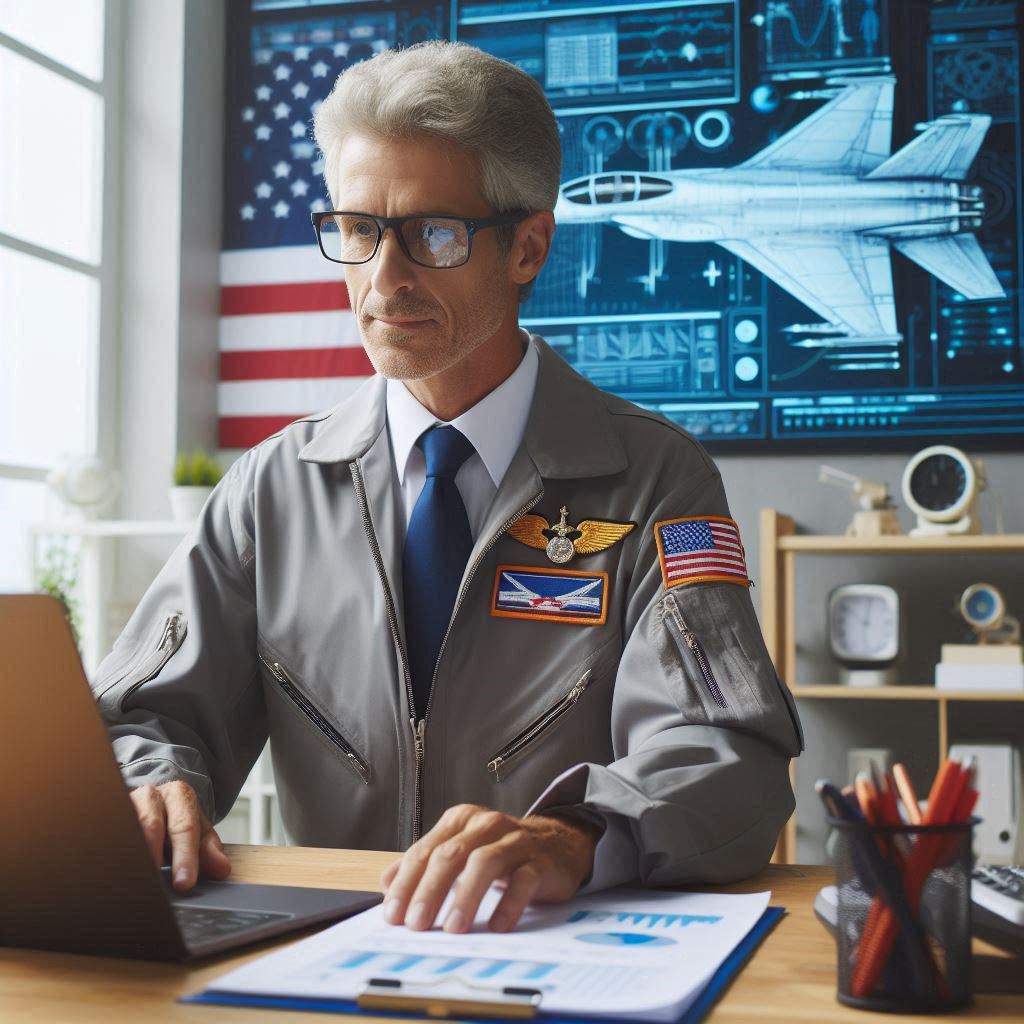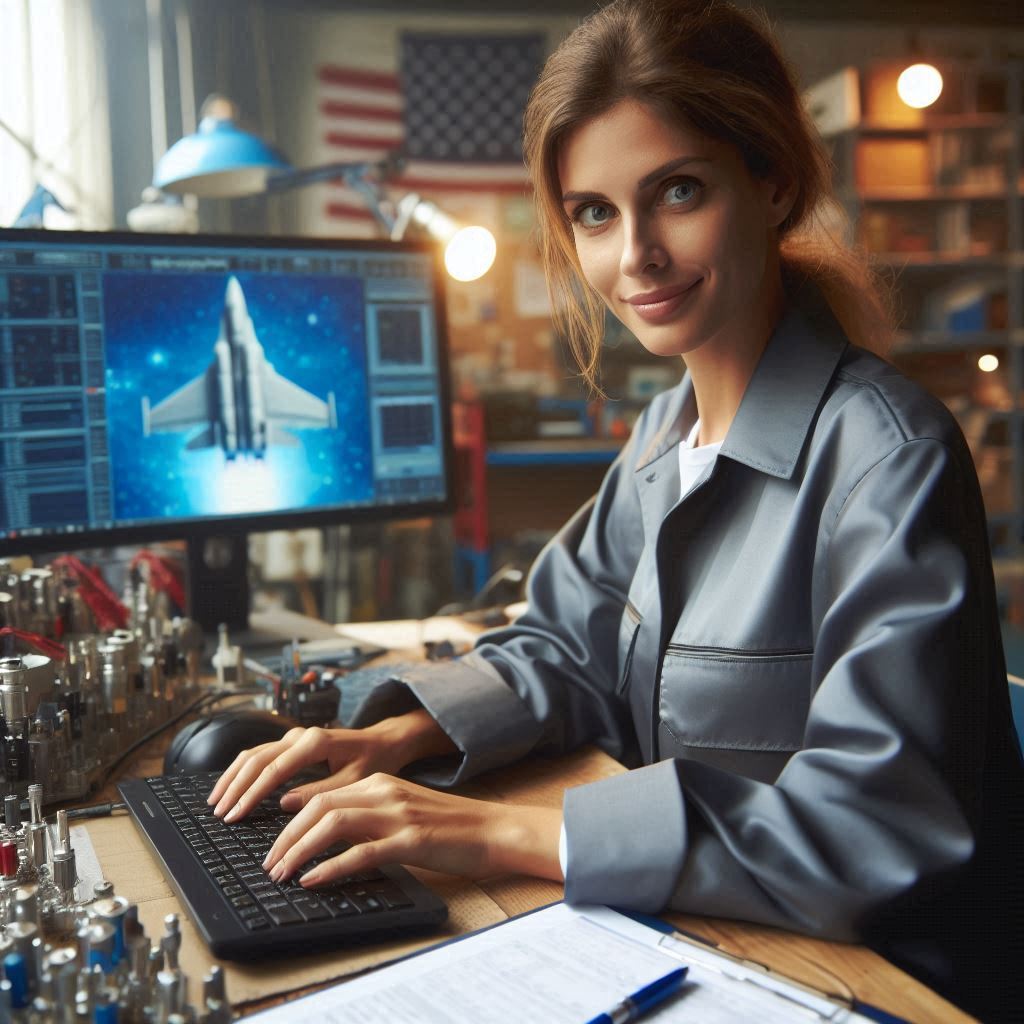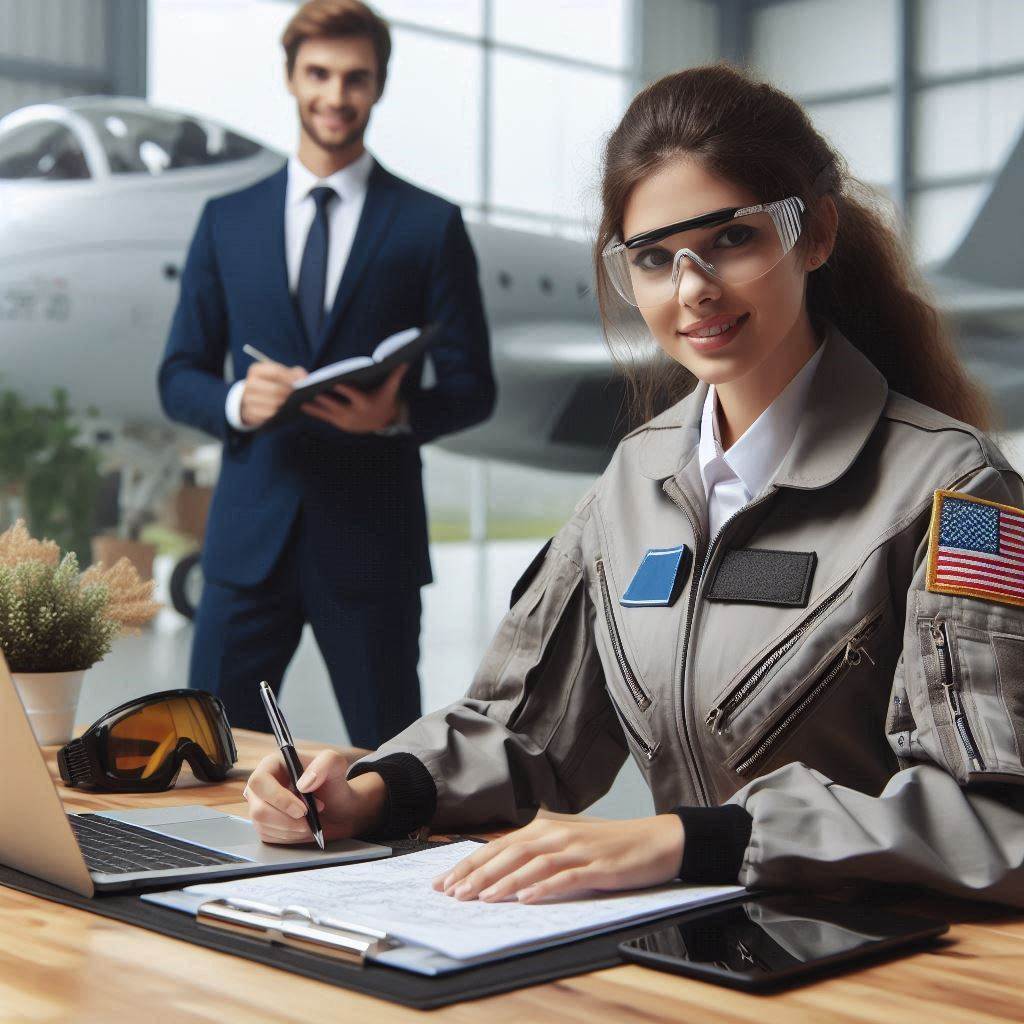Introduction
Aerospace engineering schools in the USA play a crucial role in advancing the aerospace industry by providing top-notch education and training.
These institutions equip students with the necessary skills and knowledge to excel in the highly competitive field of aerospace engineering.
Choosing a top aerospace engineering school can significantly impact your career prospects.
Offering access to cutting-edge research, industry connections, and expert faculty.
Graduating from a renowned program opens doors to prestigious job opportunities, competitive internships, and advanced research projects.
These schools often have state-of-the-art facilities and resources that allow students to engage in hands-on learning and innovative experiments.
The quality of education and training received at leading schools translates to a strong professional network.
Fostering connections with industry leaders and fellow engineers.
Attending a top aerospace engineering school not only provides academic excellence but also enhances career growth and development.
Graduates from these programs are well-prepared to tackle complex challenges in aviation and space exploration.
Contributing to significant advancements in technology and safety.
This blog explores the top aerospace engineering schools in the USA, highlighting how they prepare students for impactful careers in the aerospace industry.
Choosing the right school sets the foundation for a rewarding and successful aerospace engineering career.
With opportunities to make groundbreaking contributions to the field.
Criteria for evaluating aerospace engineering schools
Factors Such as Accreditation, Faculty Expertise, Research Opportunities, and Internship Programs
When selecting a top aerospace engineering school, consider several critical factors.
Accreditation is essential for ensuring a program meets high educational standards.
Accredited programs offer quality education recognized by employers and other institutions.
Look for schools accredited by ABET, the Accreditation Board for Engineering and Technology.
Faculty expertise is another crucial factor.
Top schools have experienced professors who are leaders in aerospace engineering.
These faculty members bring valuable knowledge and industry connections to their teaching.
Learning from experts enhances your education and opens doors to unique opportunities.
Research opportunities are vital for aspiring aerospace engineers.
Leading schools offer extensive research programs where students work on cutting-edge projects.
These projects often involve collaboration with industry partners and government agencies.
Engaging in research hones problem-solving skills and provides hands-on experience.
Internship programs are also important when choosing a school.
Internships allow students to apply classroom knowledge in real-world settings.
Top schools have strong connections with aerospace companies, offering valuable internship placements.
Internships provide practical experience, enhance resumes, and can lead to job offers.
Importance of Considering Both Academic and Practical Aspects When Choosing a School
When choosing an aerospace engineering school, consider both academic and practical aspects.
Academic excellence ensures you receive a solid theoretical foundation.
Look for schools with rigorous curricula covering essential topics like aerodynamics, propulsion, and structures.
Practical experience is equally important for a successful career.
Top schools offer hands-on learning opportunities through labs, projects, and internships.
Consider the school’s facilities and resources.
Modern labs and equipment are crucial for effective learning and research.
Schools with state-of-the-art facilities provide better training and more opportunities for innovation.
Look at the school’s industry connections and partnerships.
Top schools provide career counseling, academic advising, and extracurricular activities.
These services help students succeed academically and professionally.
Campus life and culture should also factor into your decision.
A supportive and vibrant campus environment enhances your overall educational experience.
Consider the location, campus facilities, and student organizations.
Choosing a top aerospace engineering school involves considering multiple factors.
Accreditation ensures a quality education recognized by employers.
Faculty expertise and research opportunities enhance learning and open doors to unique projects.
Academic excellence provides a solid theoretical foundation, while practical experience prepares you for real-world challenges.
Evaluate the school’s facilities, industry connections, and student support services.
A supportive campus environment enhances your educational experience and personal growth.
By carefully considering these factors, you can choose a school that best fits your academic and career goals.
Top aerospace engineering schools offer the education, resources, and opportunities needed for a successful and rewarding career in aerospace engineering.
Massachusetts Institute of Technology (MIT)
When it comes to aerospace engineering programs in the USA, MIT is undoubtedly one of the top choices.
Let’s delve into the history of MIT’s aerospace engineering program.
Its notable faculty members and research projects, and the unique opportunities available to students.
Brief History of MIT’s Aerospace Engineering Program
The Massachusetts Institute of Technology (MIT) established its aerospace engineering program in 1914.
MIT initially focused on aeronautical engineering, reflecting early aviation’s rise.
Over time, the program expanded to include astronautics, aligning with space exploration advancements.
MIT’s program has consistently ranked among the top aerospace engineering schools in the USA.
Its long-standing history and contributions to the field are widely recognized and respected.
Notable Faculty Members and Research Projects
MIT’s aerospace engineering program boasts several notable faculty members.
Professor Daniel Hastings, an expert in spacecraft dynamics, has made significant contributions to space mission design.
Professor Sheila Widnall, a former Secretary of the Air Force, has influenced aerodynamics and fluid mechanics.
Their expertise enriches the learning experience for students.
The program is renowned for its cutting-edge research projects.
One significant project is the design of high-efficiency propulsion systems.
Another groundbreaking project focuses on the development of autonomous aerial vehicles.
Faculty and students collaborate on these projects, pushing the boundaries of aerospace technology.
MIT‘s research facilities include the Wright Brothers Wind Tunnel, which supports advanced aerodynamics research.
The Space Systems Laboratory is another key facility, enabling innovative spacecraft design and testing.
These facilities provide students with hands-on research opportunities.
Unique Opportunities Available to Students, Such as Participation in NASA Programs
MIT offers unique opportunities for students, enhancing their educational experience.
One such opportunity is participation in NASA programs.
Through these programs, students engage in real-world aerospace projects.
They collaborate with NASA scientists and engineers, gaining practical experience and insights.
The MIT-NASA partnership includes the Space Grant Consortium, providing scholarships and internships.
Students can work on NASA missions, contributing to space exploration efforts.
These experiences are invaluable for students aspiring to careers in aerospace engineering.
Additionally, MIT hosts several student organizations focused on aerospace engineering.
The MIT Rocket Team designs and launches rockets, offering practical design and engineering experience.
The MIT Satellite Team works on satellite development, providing insights into space systems engineering.
MIT also encourages interdisciplinary collaboration.
Students often work with peers from other engineering and science disciplines.
This collaboration fosters innovation and broadens students’ understanding of complex aerospace challenges.
MIT’s connections with industry leaders provide further opportunities for students.
Internships and co-op programs with aerospace companies are common.
These experiences help students apply their classroom knowledge to real-world problems.
MIT’s aerospace engineering program has a rich history dating back to 1914.
The program’s notable faculty members and groundbreaking research projects enhance its reputation.
Students benefit from unique opportunities, such as participation in NASA programs and involvement in cutting-edge research.
By providing access to top-tier facilities, interdisciplinary collaboration, and industry connections.
MIT prepares its students for successful careers in aerospace engineering.
The program‘s blend of theoretical knowledge and practical experience ensures that graduates are well-equipped to advance the field of aerospace engineering.
Stanford University
Stanford’s Reputation in the Field of Aerospace Engineering
Stanford University has a stellar reputation in aerospace engineering.
The program is renowned for its rigorous academic curriculum and innovative research.
Stanford consistently ranks among the top aerospace engineering schools in the USA, attracting students worldwide.
The university’s aerospace engineering program focuses on preparing students for leadership roles in the industry.
Stanford‘s commitment to excellence is evident in its world-class faculty, state-of-the-art facilities, and strong industry connections.
Graduates from Stanford‘s aerospace engineering program are highly sought after by top aerospace companies and research institutions.
The Cutting-Edge Research Conducted by Faculty Members and Students
Stanford‘s aerospace engineering faculty and students engage in cutting-edge research.
They address some of the most pressing challenges in the field.
Research areas include advanced propulsion systems, autonomous aerial vehicles, and space exploration technologies.
Faculty members at Stanford are leaders in their respective areas of expertise.
They collaborate with students on groundbreaking research projects that push the boundaries of aerospace technology.
Students have opportunities to work on research that contributes to the advancement of the aerospace industry.
Stanford’s research initiatives often receive funding from major aerospace organizations, including NASA and the Department of Defense.
This support enables the development of innovative solutions and technologies.
Students gain hands-on experience working with advanced tools and methodologies.
Internship and Networking Opportunities Available to Students
Stanford offers excellent internship and networking opportunities for aerospace engineering students.
The university‘s strong ties with the aerospace industry facilitate valuable work experiences.
Students can intern with leading aerospace companies like Boeing, SpaceX, and Lockheed Martin.
Internships provide students with practical experience and a chance to apply their classroom knowledge to real-world projects.
These experiences are crucial for professional development and career readiness.
Students also benefit from the university‘s robust alumni network, which includes many successful aerospace engineers.
Networking opportunities at Stanford are abundant.
The university hosts industry conferences, seminars, and workshops that connect students with professionals in the field.
These events allow students to learn from industry experts and establish important professional relationships.
Stanford‘s career services also support students in securing internships and job placements.
They offer resources and guidance for resume building, interview preparation, and job searching.
Students are well-prepared to enter the aerospace industry upon graduation.
Stanford University‘s aerospace engineering program stands out for its excellence in education, research, and industry connections.
The program‘s strong reputation attracts top talent and prepares students for successful careers in aerospace engineering.
Faculty and students at Stanford engage in cutting-edge research, addressing key challenges in the aerospace field.
The university‘s research initiatives receive significant support, enabling the development of innovative technologies.
Internship and networking opportunities at Stanford are exceptional.
Students gain practical experience and build professional networks that enhance their career prospects.
Through its rigorous academic curriculum and strong industry ties, Stanford‘s aerospace engineering program continues to be a leader in the field.
Read: Iconic US Buildings and the Architects Behind Them.
California Institute of Technology (Caltech)
Caltech’s Focus on Innovation and Research in Aerospace Engineering
Caltech is renowned for its focus on innovation and research in aerospace engineering.
The institute places a strong emphasis on advancing the field through cutting-edge research.
Students engage in groundbreaking projects that push the boundaries of aerospace technology.
Caltech’s research initiatives often involve collaboration with NASA, the Department of Defense, and leading aerospace companies.
This focus on innovation ensures that students are at the forefront of new developments and technologies.
The Hands-On Learning Experiences Offered to Students
Caltech offers extensive hands-on learning experiences for its aerospace engineering students.
The curriculum includes laboratory courses where students work with advanced equipment and technologies.
Students participate in design and build projects, applying theoretical knowledge to real-world challenges.
These projects often involve creating prototypes, testing materials, and developing new technologies.
The hands-on approach helps students gain practical skills and experience, preparing them for careers in aerospace engineering.
Internships and co-op programs are integral to Caltech’s hands-on learning.
The institute has strong connections with aerospace companies, providing students with valuable industry experience.
These internships allow students to work on actual engineering problems, enhancing their skills and resumes.
Caltech also encourages students to participate in research projects alongside faculty members, further enriching their hands-on learning experience.
Notable Alumni and Their Contributions to the Field
Caltech boasts numerous notable alumni who have made significant contributions to aerospace engineering.
One of the most famous alumni is Frank Malina, co-founder of the Jet Propulsion Laboratory (JPL).
Malina’s work in rocket propulsion and space exploration has had a lasting impact on the field.
Another distinguished alumnus is Theodore von K‘rm‘n, a pioneer in aerodynamics and astronautics.
Von K‘rm‘n’s contributions include the development of theories on supersonic flight and the founding of JPL.
His work laid the foundation for many modern aerospace advancements.
More recently, Elon Musk, founder of SpaceX, has revolutionized space travel and exploration.
Musk’s innovative approaches to rocket design and space missions have garnered global attention.
His work continues to influence the future of aerospace engineering and commercial spaceflight.
Caltech’s alumni network extends to many other influential figures in aerospace engineering.
Their achievements underscore the institute’s commitment to producing leaders and innovators in the field.
Caltech stands out for its focus on innovation and research in aerospace engineering.
The institute’s emphasis on cutting-edge research projects places students at the forefront of technological advancements.
Extensive hands-on learning experiences, including laboratory courses, design projects, and internships, prepare students for successful careers.
Notable alumni, such as Frank Malina, Theodore von K‘rm‘n, and Elon Musk, highlight Caltech’s impact on the field.
Their contributions to rocket propulsion, aerodynamics, and space exploration demonstrate the institute’s legacy of excellence.
Caltech’s commitment to innovation, practical experience, and producing industry leaders makes it a top choice for aspiring aerospace engineers.
Read: Diversity in the US Architectural Scene: A Deep Dive

University of Michigan-Ann Arbor
The Strong Aerospace Engineering Program at the University of Michigan
The University of Michigan boasts a strong aerospace engineering program with a rich history.
Established in 1914, the program has consistently ranked among the top in the nation.
The program focuses on providing a comprehensive education in both aeronautical and astronautical engineering.
Students benefit from a rigorous curriculum, covering fundamentals and advanced topics in aerospace engineering.
The University of Michigan emphasizes hands-on learning and research opportunities, preparing students for successful careers.
The State-of-the-Art Facilities and Research Centers Available to Students
The University of Michigan offers state-of-the-art facilities and research centers for aerospace engineering students.
The FXB Building, home to the Department of Aerospace Engineering, features advanced laboratories and classrooms.
The Michigan Aerospace Engineering Department has the Wilson Student Team Project Center, supporting student-led aerospace projects.
The university also houses the Michigan Aeronautical Research Center (MARC).
MARC focuses on cutting-edge research in aerodynamics, propulsion, and flight dynamics.
The Michigan Institute for Plasma Science and Engineering (MIPSE) is another key research center.
MIPSE conducts groundbreaking research in plasma dynamics and space propulsion.
Students have access to the Subsonic Aerodynamic Lab, featuring low-speed wind tunnels for aerodynamic testing.
The Space Physics Research Laboratory (SPRL) provides facilities for space systems and satellite development.
These facilities enable students to engage in hands-on research, enhancing their practical skills.
Transform Your Career Today
Unlock a personalized career strategy that drives real results. Get tailored advice and a roadmap designed just for you.
Start NowThe Career Outcomes of Graduates from the Program
Graduates of the University of Michigan’s aerospace engineering program achieve excellent career outcomes.
They find employment with leading aerospace companies, such as Boeing, Lockheed Martin, and SpaceX.
Many graduates also pursue careers with government agencies, including NASA and the Department of Defense.
The program‘s emphasis on research and practical experience prepares students for diverse roles.
Alumni work as aerospace engineers, systems engineers, and research scientists.
They contribute to the development of aircraft, spacecraft, and defense systems.
Some graduates also pursue advanced degrees, continuing their research in graduate programs.
The University of Michigan‘s strong industry connections facilitate career opportunities.
Internships and co-op programs provide students with valuable industry experience.
These experiences enhance their employability and professional network.
The university‘s career services offer support in job placement and career development.
The program‘s alumni network is extensive and influential.
Graduates often mentor current students, providing guidance and industry insights.
This network supports career advancement and fosters professional connections.
The University of Michigan‘s aerospace engineering program is renowned for its comprehensive education and research excellence.
State-of-the-art facilities and research centers provide students with hands-on learning opportunities.
Graduates of the program achieve excellent career outcomes, securing positions with top aerospace companies and government agencies.
By offering a blend of theoretical knowledge and practical experience.
The University of Michigan prepares its students for successful careers in aerospace engineering.
The program‘s strong industry connections and extensive alumni network further enhance career prospects.
Making it one of the top aerospace engineering schools in the USA.
Read: How to Become a Civil Rights Advocate
Delve into the Subject: Best States for Cybersecurity Analyst Jobs in the USA
Gain More Insights: Remote Work Opportunities for Engineering Technicians
Georgia Institute of Technology
Georgia Tech’s Emphasis on Practical Skills and Industry Partnerships in Aerospace Engineering
First, Georgia Tech places a strong emphasis on practical skills in aerospace engineering.
The curriculum integrates hands-on learning with theoretical knowledge.
Students engage in projects that simulate real-world aerospace challenges, preparing them for industry demands.
The institute’s robust industry partnerships enhance students’ educational experience.
Georgia Tech collaborates with leading aerospace companies to provide students with relevant skills.
These partnerships ensure that the curriculum aligns with industry needs, making graduates highly employable.
Research Initiatives and Collaborations with Leading Aerospace Companies
Georgia Tech is renowned for its innovative research initiatives.
Faculty and students work on cutting-edge projects that address critical aerospace issues.
Research areas include advanced aerodynamics, propulsion systems, and space exploration technologies.
The institute’s research efforts are supported by collaborations with leading aerospace companies.
Georgia Tech partners with organizations like NASA, Boeing, and Lockheed Martin.
These collaborations provide students with opportunities to work on groundbreaking projects.
Students gain valuable experience through these research initiatives.
They use state-of-the-art facilities and equipment to conduct experiments and analyze data.
This hands-on research experience is crucial for developing advanced technical skills.
Georgia Tech’s research centers, such as the Aerospace Systems Design Laboratory, lead innovative projects.
These centers focus on developing new technologies and improving existing systems.
Students contribute to research that pushes the boundaries of aerospace engineering.
The Strong Alumni Network and Career Services Offered to Students
Georgia Tech boasts a strong alumni network that supports students’ career development.
Alumni often return to campus to share their experiences and offer guidance.
This network provides students with valuable connections in the aerospace industry.
The institute’s career services play a crucial role in students’ professional success.
They offer resources for resume building, interview preparation, and job searching.
Career services also organize job fairs and networking events that connect students with potential employers.
Internship opportunities are abundant at Georgia Tech.
The institute’s industry partnerships facilitate internships with top aerospace companies.
These internships provide students with practical experience and enhance their employability.
Georgia Tech’s co-op program is another valuable resource for students.
It allows them to alternate between academic terms and full-time work.
This program provides extensive industry experience and helps students build a strong professional network.
Georgia Tech‘s aerospace engineering program excels in emphasizing practical skills and fostering industry partnerships.
The institute prepares students for the demands of the aerospace industry through hands-on learning and relevant projects.
Research initiatives at Georgia Tech are innovative and collaborative.
Students work on cutting-edge projects with leading aerospace companies, gaining valuable experience.
The institute’s strong alumni network and comprehensive career services further enhance students’ career prospects.
Through its focus on practical skills, industry collaborations, and robust support systems.
Georgia Tech‘s aerospace engineering program remains a leader in the field.
Students graduate well-prepared to contribute to the advancement of aerospace technology and achieve professional success.
Read: The Intersection: Architecture & Tech in Modern USA.
Discover More: Geotechnical Engineering: Advances in Ground Improvement
Purdue University
Purdue’s Long-Standing Reputation in Aerospace Engineering Education
Purdue University has a distinguished reputation in aerospace engineering education.
For decades, Purdue has been recognized as a leading institution in the field.
Its aerospace engineering program is consistently ranked among the top in the nation.
The university’s commitment to excellence in education and research attracts top students and faculty.
Purdue’s strong industry connections and robust curriculum contribute to its esteemed reputation.
The Diverse Research Areas and Projects Pursued by Faculty and Students
Purdue‘s aerospace engineering program offers a wide range of research areas and projects.
Faculty and students work on cutting-edge projects in aerodynamics, propulsion systems, and spacecraft design.
Research in aerodynamics includes wind tunnel testing and computational fluid dynamics.
Propulsion research focuses on developing advanced rocket engines and improving efficiency.
The university also engages in research related to space exploration and satellite systems.
Projects include designing spacecraft for planetary exploration and developing technologies for satellite communications.
Additionally, Purdue‘s research extends to unmanned aerial vehicles (UAVs) and their applications in various industries.
Faculty members at Purdue are leaders in their fields, often collaborating with industry and government agencies.
Their expertise and involvement in groundbreaking projects provide students with valuable learning opportunities.
Research at Purdue not only advances knowledge but also contributes to real-world aerospace innovations.
Opportunities for Students to Gain Real-World Experience Through Internships and Co-op Programs
Purdue University provides extensive opportunities for students to gain real-world experience.
The aerospace engineering program includes robust internship and co-op programs.
These programs allow students to work with leading aerospace companies and research institutions.
Internships offer students hands-on experience in areas such as aircraft design, propulsion, and systems engineering.
Co-op programs provide extended work placements, allowing students to integrate academic learning with practical work experience.
These programs often lead to job offers upon graduation and help students build valuable professional networks.
Purdue‘s strong industry connections facilitate these opportunities, with many students working for major aerospace companies like Boeing, Lockheed Martin, and NASA.
These experiences are crucial for applying classroom knowledge to real-world challenges and enhancing resumes.
Purdue University‘s aerospace engineering program is renowned for its long-standing reputation and excellence in education.
The program‘s diverse research areas, including aerodynamics, propulsion, and space exploration, showcase its commitment to advancing aerospace technology.
Students benefit from extensive real-world experience through internships and co-op programs, preparing them for successful careers.
Purdue‘s industry connections and hands-on learning opportunities ensure that students gain practical skills and build professional networks.
The university‘s focus on innovation, research, and real-world application makes it a top choice for aspiring aerospace engineers.
Learn More: Important Tools for Transportation Engineers
Conclusion
Choosing a top aerospace engineering school in the USA is crucial for a successful career.
Students must carefully evaluate their options, looking beyond rankings and considering factors such as faculty expertise, research opportunities, and industry connections.
It’s essential to remember that the quality of education received can have a significant impact on future career success in the field of aerospace engineering.
The knowledge and skills gained during undergraduate and graduate studies will shape the abilities of students as they enter the workforce.
By attending a top aerospace engineering school, students can access state-of-the-art facilities.
Work with renowned faculty members, and network with industry professionals.
These experiences will not only enhance their academic knowledge but also prepare them for the challenges and opportunities of the aerospace industry.
Therefore, it is imperative for aspiring aerospace engineers to choose a reputable institution that will provide them with the resources and support needed to excel in the field.
The decision to attend a top aerospace engineering school should not be taken lightly as it can greatly impact one’s career trajectory and overall success in the aerospace industry.
[E-Books for Sale]
The Big Book of 500 High-Paying Jobs in America: Unlock Your Earning Potential
$19.99 • 500 High-Paying Jobs • 330 pages
Explore 500 high-paying jobs in America and learn how to boost your career, earn more, and achieve success!
See All 500 High-Paying Jobs of this E-Book
1001 Professions Without a Degree: High-Paying American Jobs You Can Start Now
$19.99 • 1001 Professions Without a Degree • 174 pages
Discover 1001 high-paying jobs without a degree! Unlock career tips, skills, and success strategies for just $19.99!




